Anna Kunz produces experiential works that invite the viewer to immerse her or himself into a space that intersects formal complexity in thoughtful rhythmic arrangements. The COMP Magazine recently visited her East Garfield Park studio to discuss her affinity with performance and painting, the relevance of early 20th c. art history and the experiential qualities of her practice.
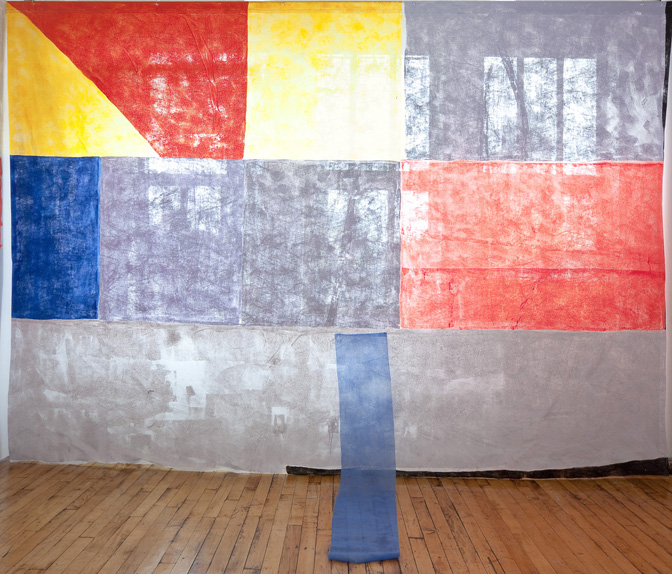
New Work by Anna Kunz documented in her studio
You have a background in performance and your paintings are often produced at fairly large scale. There appears to be a physical tactile component to your working practice. Can you describe your process for interacting with color and scale?
I have a pretty broad practice, where one-way of working feeds the next. Sometimes the action or process of making the work is a temporal event. I might make a painting on the wall and then re-form it into a sculpture, and reconstruct it into a garment, and photograph it out of studio context and re-locate it into an environment, and show a part of it in a gallery setting. It seems restless, but I like to possibility of painting to be many things, lead many roles, gather a backstory, so that they provide many entrance points and go beyond what is seen statically. The idea of bringing more languages ( architecture, performance, dance, etc.) into painting interests me. In terms of the process for my paintings on canvas, I usually put the raw canvas on the floor, and walk upon a wooden plank that extends over the fabric. I paint horizontally, on the floor, and I turn the work in progress. This positions me within the work. I move around the work, staining and sectioning with color- it’s a haptic process, and it’s very physical. Once I have something visual to respond to, I start to think in terms of choreography, where I move the color and forms around in the space. They become like puzzles, and I work intuitively and mindfully and then formally to sober them up. I accept the rectangular format, but I’m not thinking of the painting as being contained. They are also parts of an installation, if the opportunity and destination present itself. The works are fragments in a continuum. When I position them in an arrangement in a space, I work to make them in a conversation, as if they are characters, depending on what they seem to be emblematic for …or embody. I also work to ask the color to carry the eye through the installation. The color is the framing device and keeps the continuity. The transparent curtains are painted in another, less intimate way. The fabric is pinned to the wall and I paint the wall through the fabric, so the color is transferred. I suspend them in front of a window or wall to define a space, and allow the body of the viewer to be positioned within the work. There is a contingency of the body in all the work. My way of thinking is to be inclusive; so all the paintings/environments I make are exploring the literal and the metaphorical together. At least, that’s how I’m thinking when I’m working. It keeps the questions coming. It presents new possibilities to me for painting, the activity.
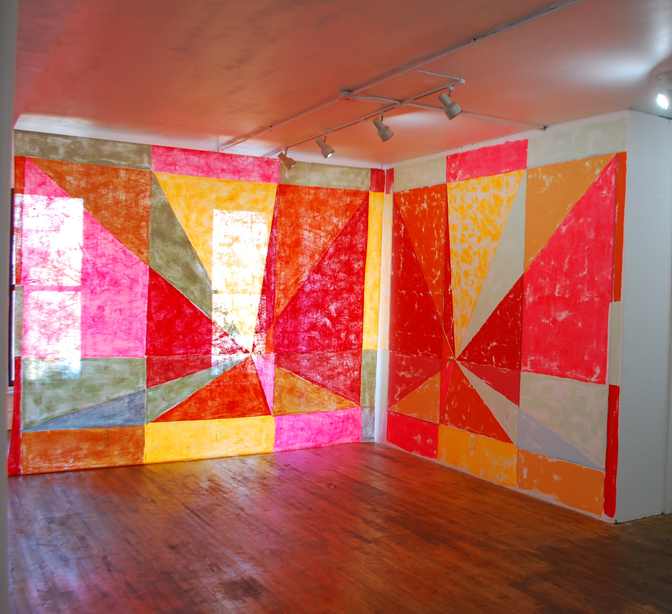
Anna Kunz, Pyramus and this be, latex on fabric and wall, 12’x14’x12’d
In conversation at your studio, I noted that your artwork reminded me of the paintings of Sonia Delaunay? Is this a correct reading? Do you see or connect references to her or other artist from the early to mid 20th c.?
I see the connections to Delaunay who was an artist who played a lot of roles- as a painter, a textile artist, she did work for the theatre and garments for film. She was focused on the power of color, not only as a decorative force, but something that could create interactive movement, and is physical, like a body. It was enjoyable to see her influence on Bowie’s 1979 performance on SNL. I saw that show as a kid, and I never forgot it. I remember trying to ask questions about that performance. It frightened me. It knocked me out. Bowie’s multiple roles seem to relate to Delaunay’s. It’s a way of thinking and being creative that I understand. Her approach to creativity was inserted into everything she did, not bound by objects, necessarily. Every painter is excited about the ideas that were emerging the mid 20th C, but I’ve been excited by so many ideas from painting’s history…the Luminists, the Situationists, Wabi Sabi, Ndebele Murals the Supports/Surfaces artists, Color Field Painters, Primitive art, and Egungun. I can just as easily say I like to think about the powers of Phyllis Diller, Diana Ross and Martha Stewart when I am making my work…
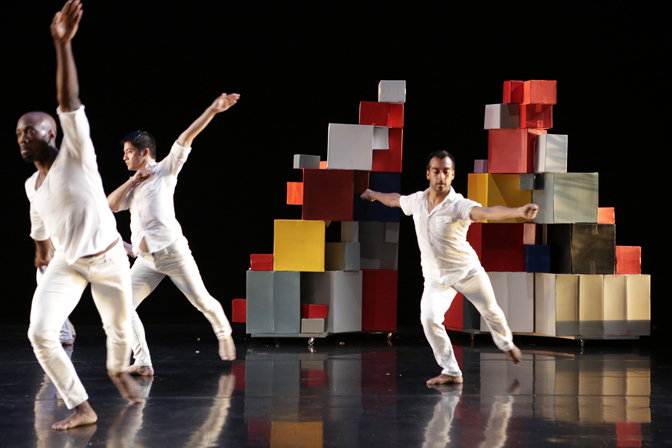
Anna Kunz, Exit Disclaimer with the Seldoms Dance Company, 2013
You mentioned that your paintings when presented as an installation (suspended from the ceiling) require the viewer to engage with your work from varied vantage points in terms of the physical and psychological. This, for me, essentially embeds your approach in an experiential position. How do you intend for your work to interact with the viewer?
Experiential is a good way to describe this. I think that my love of direct experience, sudden response, and the idea that approachability collapses distance is somewhere in here. My material choices are intended to invite conceptual associations, and are reflections on my thoughts about what is happening in painting, or in myself, or the world at the time I choose them.
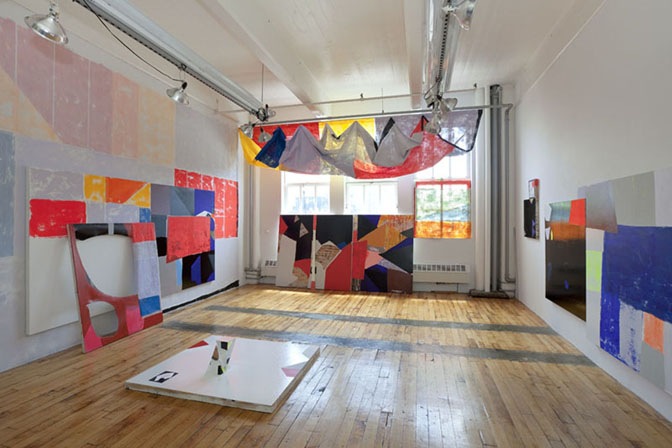
New Work by Anna Kunz documented in her studio
What do you value in the art making process? Are there specific items that you hope to share and convey in your work and teaching?
I am aware that art making can be a profound way to grow as an individual, it’s a full experience, and very important. One can find out some hard truths about themselves through the creative process, what it means to make something and the conversations it can ignite, intentionally or not. I am also aware that it is absurd, and that is profound, too. I hope to suggest to students the value of dwelling creatively and curiously in the world, and that that way of being can be applied to anything, and lead to obtaining their own measure of success.
I ask them to find a way to make work for other worlds…if possible. That is a big question. How much space do you have?
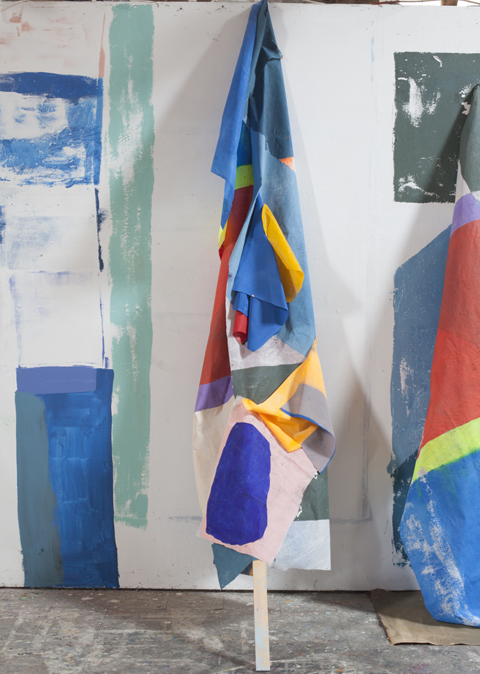
Anna Kunz, The Protagonist 4, latex on fabric and wall sculpture, 10′ x 6′ x 3’d, 2014
What are you currently working upon? Do you have any future exhibitions or projects planned for 2015?
I have a group show coming up this month, at Woman Made Gallery, called “Documents” curated by Jessica Cochran. It’s wonderful that Claudine Ise is the new Director and can carry on the legacy of the gallery. I’ll be part of a three person exhibition this February at Loyola University with Samantha Bittman and Michelle Bollinger, curated by Jennifer Murray. There are some other things I’m in the middle of scheduling, such as a project at Edra Soto and Dan Sullivan’s The Franklin this summer. There are other shows scheduled so far into the future (2017&18) that I might be making pastries by then…
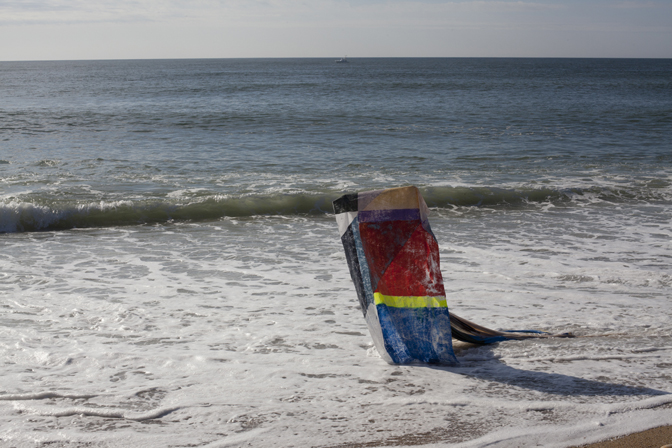
Anna Kunz, The Protagonist 3, documentation of performance, 2014
Anna Kunz has exhibited her artwork extensively in the United States, the United Kingdom, and Poland. In addition, Kunz has been the recipient of numerous awards and recommendations, including the Skowhegan School of Painting and Sculpture, The Artadia Fund for Art and Dialogue, The Louis Comfort Tiffany Foundation, the Richard H. Driehaus Foundation, the Rema Hort Mann Foundation (NYC), The Marie Walsh Sharpe Program (NYC) and The Edward Albee Foundation Residency (NY).
To view additional materials on the wok of Anna Kunz, please visit:
Anna Kunz – http://www.annakunz.net/front/
UUSI – http://uusi.us/pages/anna-kunz
Michael Rutherford’s interview with Anna Kunz – http://www.paintersbread.com/2013/10/anna-kunz-inteview.html
Additional images and studio views of Anna Kunz:
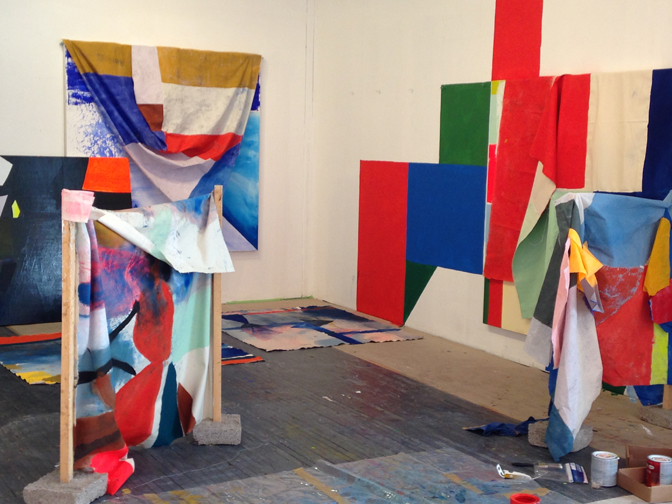
Anna Kunz, Work in progress, studio, 2015
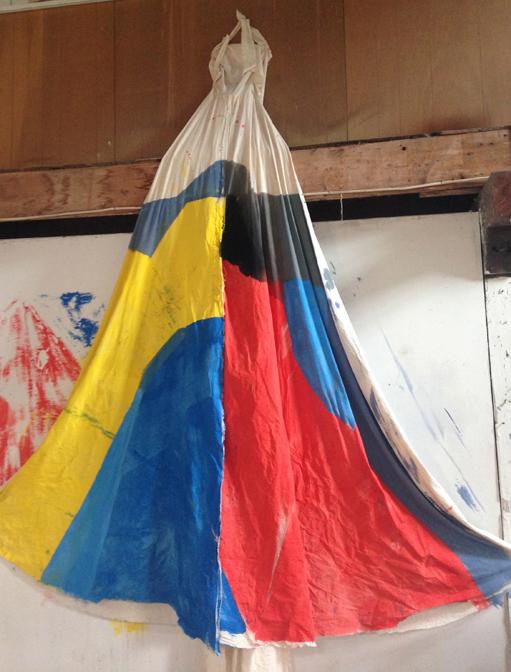
Anna Kunz in collaboration with writer EK Ryan, Protagonist 2, dress with latex on fabric, 10′ x 3′, 2014
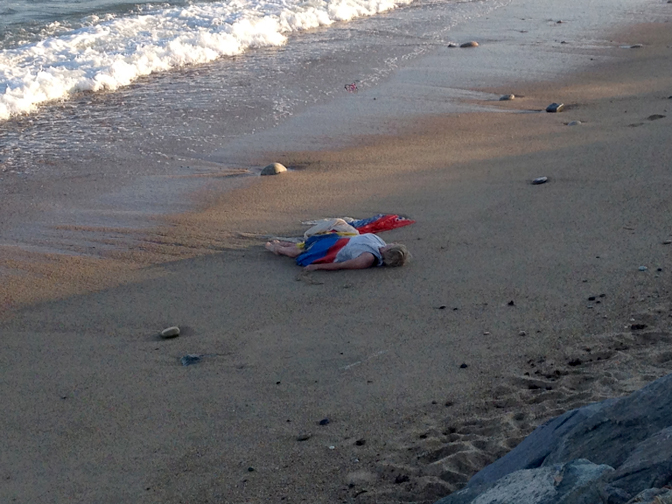
Anna-Kunz, Protagonist 3, 2014. Documentation of Performance, Montauk, NY. Photo: Iliana Ortega
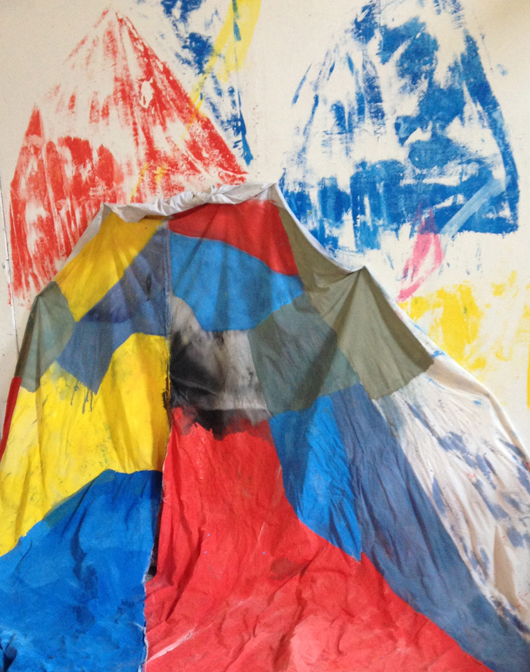
Anna Kunz, The Protagonist 1, latex on fabric and wall, dimensions vary, 2014
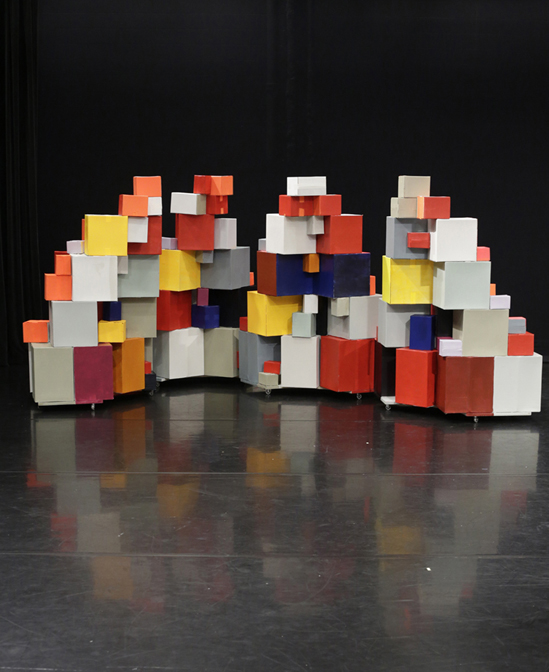
Anna Kunz, Exit Disclaimer, latex on cardboard, moveable sculpture, 10’x 20′ x 6’d, 2013
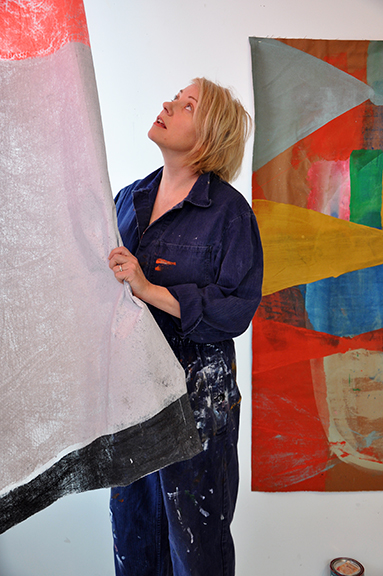
Anna Kunz, artist, Chicago, IL, 2014
Interview and portrait by Chester Alamo-Costello


